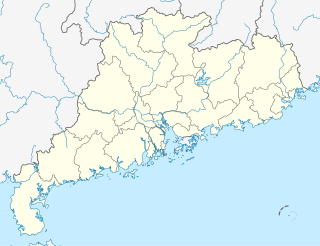 W
WThe 1918 Shantou earthquake occurred in Shantou, Guangdong, Republic of China. It also caused some damage in what was then British Hong Kong.
 W
WA landslide of construction waste occurred at Shenzhen, on 20 December 2015. It destroyed and buried industrial buildings and worker living quarters in the nearby industrial park. The death toll was 73, with 4 people reported missing. It was an industrial accident due natural disaster. waste dump which had built up in previous two years.
 W
WThe 2017 China floods began in early June 2017. More than 14.9017 million people in 10 provinces and municipalities and regions were affected, especially the southern and central provinces and regions of Guangxi, Guangdong, Hunan, Hubei, Jiangxi, Jiangsu, Anhui, Zhejiang, Shandong, Shaanxi, Yunnan, Sichuan, Gansu and Henan. Hunan was the hardest hit. A total of 18,100 houses were destroyed, and more than 9,821-square-metre (105,710 sq ft) of crops were inundated.
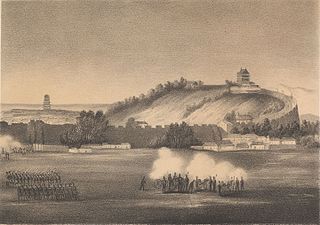 W
WThe Battle of Canton was fought by British and French forces against Qing China on 28–31 December 1857 during the Second Opium War. The British High Commissioner, Lord Elgin, was keen to take the city of Canton (Guangzhou) as a demonstration of power and to capture Chinese official Ye Mingchen who had resisted British attempts to implement the 1842 Treaty of Nanking. Elgin ordered an Anglo-French force to take the town and an assault began on 28 December. Allied forces took control of the city walls on 29 December but delayed entry into the city itself until 5 January. They subsequently captured Ye and some reports state they burnt down much of the town. The ease with which the allies won the battle was one of the reasons for the signing of the Treaty of Tientsin in 1858.
 W
WThe First Battle of Chuenpi was a naval engagement fought between British and Chinese ships at the entrance of the Humen strait (Bogue), Guangdong province, China, on 3 November 1839 during the First Opium War. The battle began when the British frigates HMS Hyacinth and HMS Volage opened fire on Chinese ships they perceived as being hostile.
 W
WThe Battle of First Bar was fought between British and Chinese forces at First Bar Island and its surrounding area in the Pearl River, Guangdong province, China, on 27 February 1841 during the First Opium War.
 W
WThe Battle of Macao Fort was fought between British and Chinese forces in the Pearl River, Guangdong, China on 4 January 1857 during the Second Opium War. Macao Fort was located on an islet about 3 miles south of Canton (Guangzhou).
 W
WThe Battle of the Bogue was fought between British and Chinese forces in the Pearl River Delta, Guangdong province, China, on 23–26 February 1841 during the First Opium War. The British launched an amphibious attack at the Humen strait (Bogue), capturing the forts on the islands of Anunghoy and North Wangtong. This allowed the fleet to proceed further up the Pearl River towards the city of Canton (Guangzhou), which they captured the following month.
 W
WThe Battle of the Bogue was fought between British and Chinese forces at the Humen strait (Bogue), Guangdong province, China, on 12–13 November 1856 during the Second Opium War. The British captured the forts in the Wangtong Islands on 12 November and the forts in Anunghoy Island the next day.
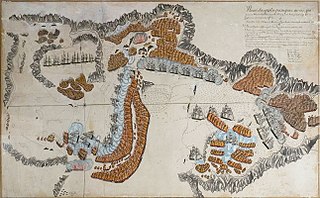 W
WThe Battle of the Tiger's Mouth was a series of engagements between a Portuguese flotilla stationed in Macau, and the Red Flag Fleet of the Chinese pirate Ching Shih, led by her second-in-command, the notorious Cheung Po Tsai - known among the Portuguese as Cam Pau Sai or Quan Apon Chay. Between September 1809 and January 1810, the Red Flag Fleet suffered defeat at the hands of the Portuguese fleet led by José Pinto Alcoforado e Sousa, within the Humen Strait - known to the Portuguese as the Boca do Tigre - until finally surrendering formally in February 1810. As her fleet surrendered, Ching Shih herself abandoned piracy on the occasion.
 W
WThe Canton Operation was part of a campaign by Japan during the Second Sino-Japanese War to blockade China to prevent it from communicating with the outside world and importing needed arms and materials. Control of Guangzhou (Canton) and the Pearl River Delta would provide a base to make the blockade of Guangdong province more effective by seizing southern China's major port and isolate the British port of British Hong Kong.
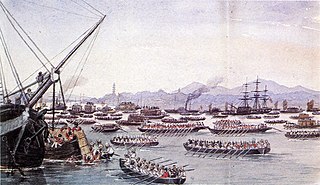 W
WThe Second Battle of Canton was fought between British and Chinese forces in Canton (Guangzhou), Guangdong province, China, in May 1841 during the First Opium War.
 W
WThe Capture of the French Folly Fort by British forces in China occurred on 6 November 1856 during the Second Opium War. The British dispersed 23 Chinese war junks and captured the French Folly fort in the Pearl River near the city of Canton (Guangzhou) in Guangdong province. The battle lasted nearly an hour. The British consul Harry Parkes described the Chinese as putting up "a very hot resistance" and the engagement as "exceeding creditable to the bravery not only of our men, but of the Chinese also."
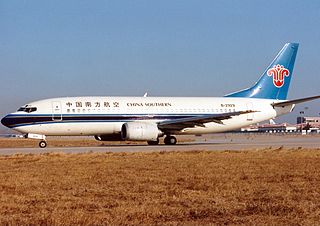 W
WChina Southern Airlines Flight 3456 (CZ3456/CSN3456) was a scheduled domestic passenger flight from Chongqing Jiangbei International Airport to Shenzhen Huangtian Airport. On May 8, 1997, the Boeing 737 performing this route crashed during the second attempt to land in a thunderstorm. The flight number 3456 is still used by China Southern and for the Chongqing-Shenzhen route but now with the Airbus A320 family or Boeing 737 Next Generation aircraft.
 W
WGuangzhouwan, officially Kouang-Tchéou-Wan, was a small enclave on the southern coast of China ceded by Qing China to France as a leased territory and administered as an outlier of French Indochina. The capital of the territory was Fort-Bayard; present-day Zhanjiang.
 W
WJiangxi province was a province of the Yuan dynasty established in 1277. It included modern Jiangxi, and most of Guangdong. The capital was Longxing.
 W
WJiangzhe province (江浙行省) was a province of the Yuan dynasty established in 1276. It included the southern portion of Jiangsu south of the Yangtze River, Zhejiang, Fujian and part of northern Guangdong. With capital was initially at Yangzhou, but in 1297 it was moved to Hangzhou Lu.
 W
WThe Kweilin incident occurred on August 24, 1938 when a Douglas DC-2 airliner carrying 18 passengers and crew was destroyed by Japanese aircraft in China. There were fourteen fatalities. It was the first civilian airliner in history to be shot down by hostile aircraft. The pilot was American and the crew and passengers Chinese. As it was unprecedented for a civilian aircraft to be attacked, there was international diplomatic outrage over the incident. In the United States, it helped solidify the popular view that Japan was morally wrong in their war against China, but the incident was not enough to spur the US into action against Japan despite Chinese entreaties. The Kweilin was re-built, and destroyed by the Japanese a second time two years later.
 W
WMiss Macao (traditional Chinese: 澳門小姐; simplified Chinese: 澳门小姐; Sidney Lau: O3 Moon4 Siu2 Je2; pinyin: Àomén xiǎojie; Wade–Giles: Ao-men Hsiao-chieh) was a Catalina seaplane owned by Cathay Pacific and operated by subsidiary Macau Air Transport Company. On 16 July 1948 it was involved in the first hijacking of a commercial aircraft. Piracy for robbery and ransom was the motive.
 W
WNanyue, also called Southern Yue or Nam Viet, was an ancient Chinese kingdom that covered the modern Chinese subdivisions of Guangdong, Guangxi, Hainan, Hong Kong, and Macau, as well as parts of southern Fujian and northern Vietnam. Nanyue was established by Zhao Tuo, then Commander of Nanhai of Qin Empire, in 204 BC after the collapse of the Qin dynasty. At first, it consisted of the commanderies Nanhai, Guilin, and Xiang.
 W
WAs trade was an important source of wealth for the Yue tribes of coastal China, the region south of the Yangtze River attracted the attention of Emperor Qin Shi Huang, and he undertook a series of military campaigns to conquer it. Lured by its temperate climate, fertile fields, maritime trade routes, relative security from warring factions to the west and northwest, and access to luxury tropical products from Southeast Asia, the emperor sent armies to conquer the Yue kingdoms in 221 BC. Military expeditions against the region were dispatched between 221 and 214 BC. It would take five successive military excursions before the Qin finally defeated the Yue in 214 BC.
 W
WThe Red Turban Rebellion of 1854–1856 was a rebellion by members of the Tiandihui or Heaven and Earth Society (天地會) in the Guangdong province of South China.
 W
WThe Second Battle of Chuenpi was fought between British and Chinese forces in the Pearl River Delta, Guangdong province, China, on 7 January 1841 during the First Opium War. The British launched an amphibious attack at the Humen strait (Bogue), capturing the forts on the islands of Chuenpi and Taikoktow. Subsequent negotiations between British Plenipotentiary Charles Elliot and Chinese Imperial Commissioner Qishan resulted in the Convention of Chuenpi on 20 January. As one of the terms of the agreement, Elliot announced the cession of Hong Kong Island to the British Empire, after which the British took formal possession of the island on 26 January.
 W
WThe Southward expansion of the Han dynasty was a series of Chinese military campaigns and expeditions in what is now modern Southern China and Northern Vietnam. Military expansion to the south began under the previous Qin dynasty and continued during the Han era. Campaigns were dispatched to conquer the Yue tribes, leading to the annexation of Minyue by the Han in 135 BC and 111 BC, Nanyue in 111 BC, and Dian in 109 BC.
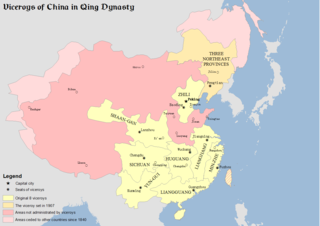 W
WThe Viceroy of Liangguang or Viceroy of the Two Guangs, fully referred to in Chinese as the Governor-General, Commander and Quartermaster, Supervisor of Waterways, and Inspector-General of the Two Expanses and Surrounding Areas, was one of eight regional Viceroys in China proper during the Ming and Qing dynasties. The two Guangs referred to Guangdong and Guangxi provinces. The areas under the Viceroy's jurisdiction included present-day Guangdong and Guangxi provinces, as well as Hainan Province.
 W
WLady Xian, also known as Lady of Qiao Guo, was a noblewoman of the Li people, born to the chieftain of the Xian tribe in Southern China, in what is now Guangdong during the Sui dynasty. She has been deified as the "Saintly Mother of Lingnan" (岭南圣母). She died during a tour of Hainan. Former Chinese Premier Zhou Enlai called her "the First Heroine of China", and Chinese Communist Party general secretary Jiang Zemin praised her as "the role model that the later generations should learn forever".
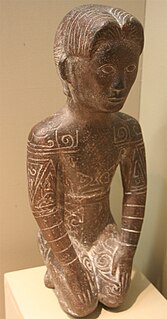 W
WThe Baiyue, Hundred Yue, or simply Yue, were various ethnic groups who inhabited the regions of Southern China to Northern Vietnam in the 1st millennium BC and 1st millennium AD. They were known for their short hair, body tattoos, fine swords, and naval prowess.